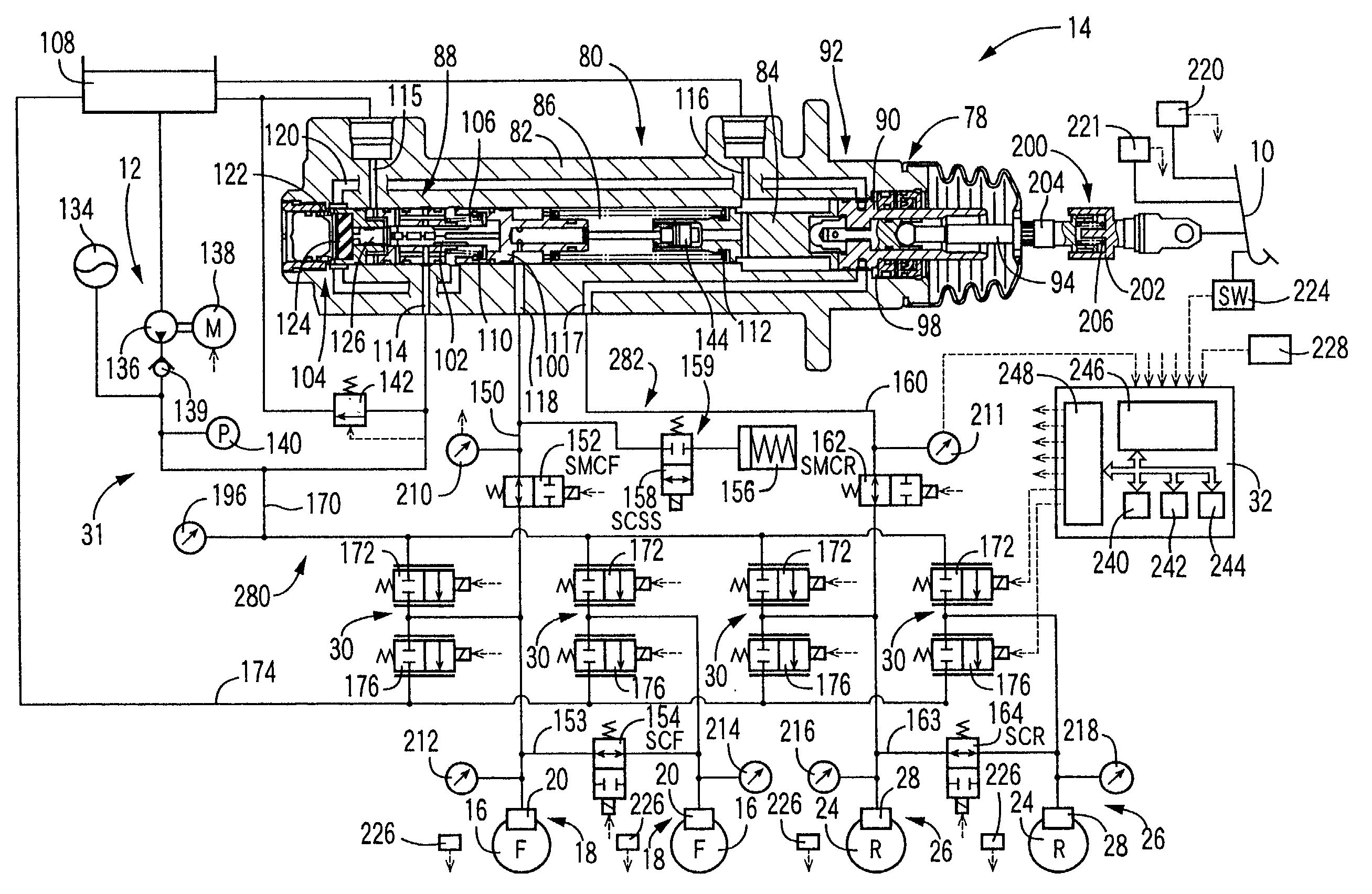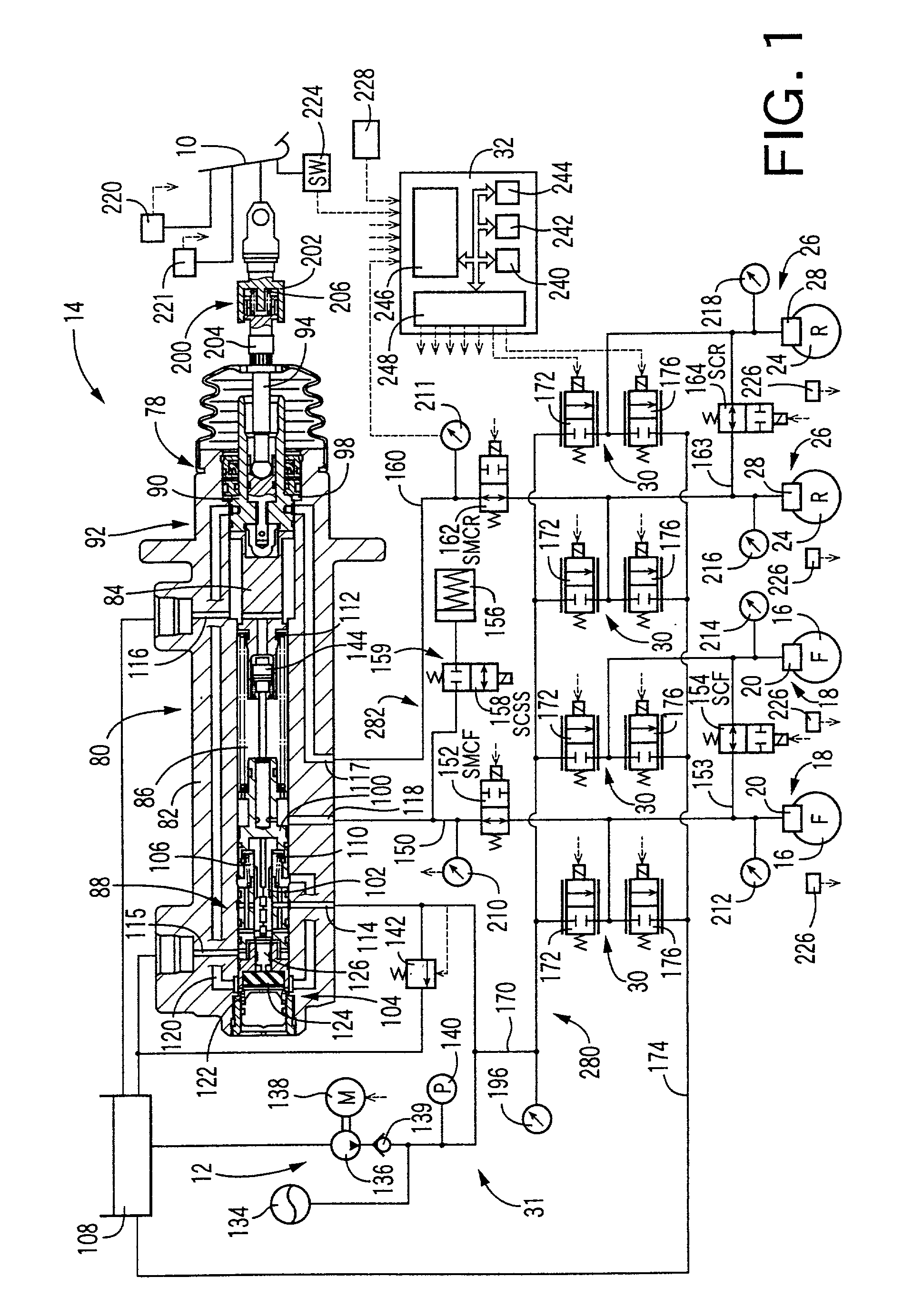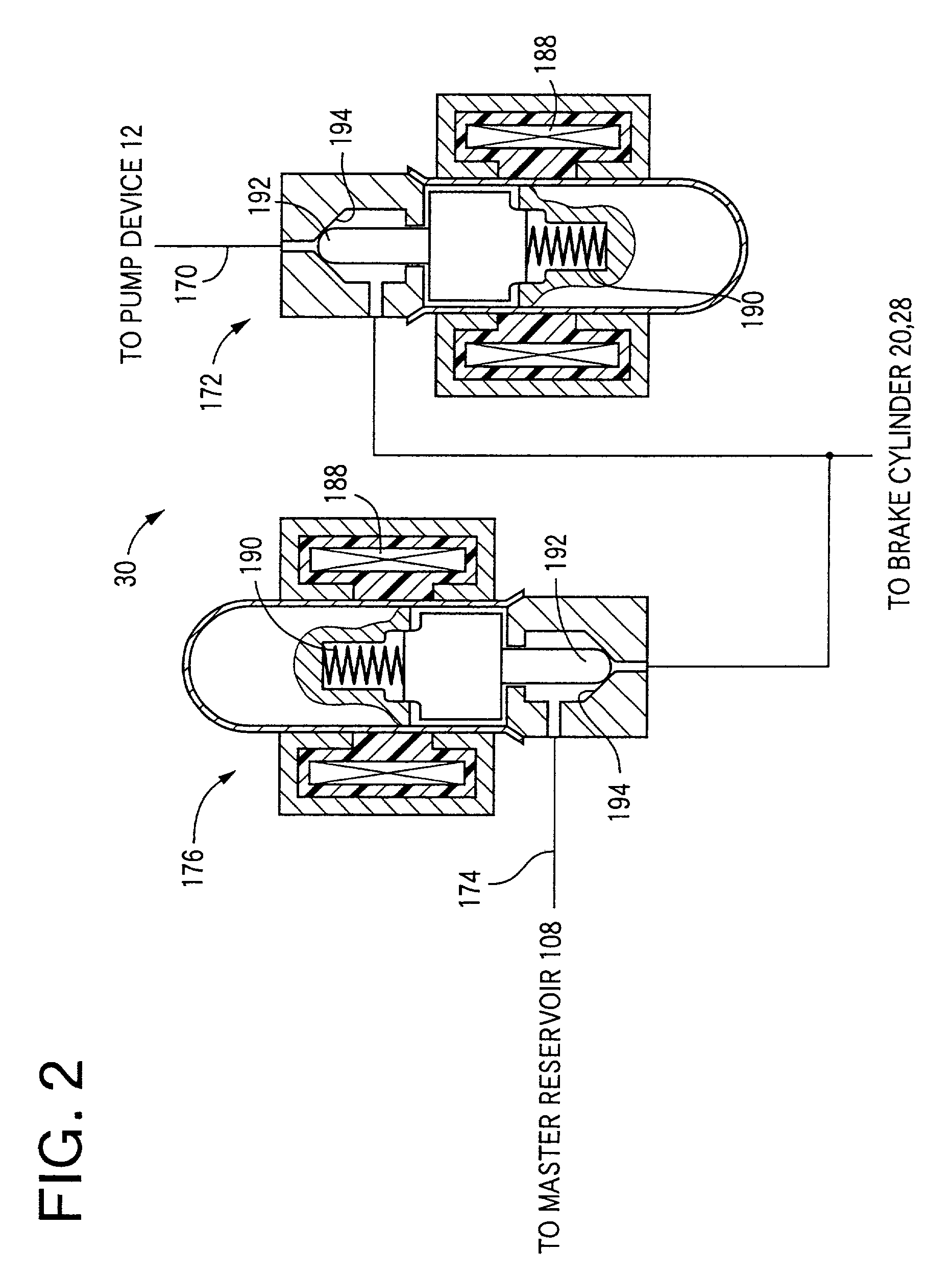Braking pressure control apparatus capable of switching between two brake operating states using power-operated and manually operated pressure sources, respectively
a technology power operation, which is applied in the direction of braking systems, braking components, transportation and packaging, etc., can solve the problems of drawbacks of braking pressure control apparatus, and achieve the effect of effective utilization of pressurized fluid
- Summary
- Abstract
- Description
- Claims
- Application Information
AI Technical Summary
Benefits of technology
Problems solved by technology
Method used
Image
Examples
second embodiment
[0369]For instance, the master-cylinder shut-off valve 152 is first opened, and the simulator shut-off valve 158 is then closed, according to this invention. In this embodiment wherein the simulator shut-off valve 158 is held open for a given time even after the shut-off valve 152 has been operated, it is possible to reduce the amounts of fluid flows to and from the pressurizing chamber 86 upon switching of the operating state of the braking system from the first operating state to the second operating state. Described more specifically, the fluid flow into the stroke simulator 156 through the open shut-off valve 158 results in a reduction of the amount of flow of the fluid into the pressurizing chamber 86, while the fluid flow from the stroke simulator 156 into the wheel brake cylinders 20 through the shut-off valve 158 results in a reduction of the amount of flow of the fluid from the pressurizing chamber 86. In this case, therefore, the stroke simulator 156 is utilized as an rese...
third embodiment
[0376]For instance, the master-cylinder shut-off valves 152, 1162 are controlled according to a duty-control routine illustrated in the flow chart of FIG. 8 according to this invention.
[0377]The master-cylinder shut-off valve duty-control routine of FIG. 8 is initiated with step S72 to determine whether the first switching flag is set at “1”. As in the preceding embodiments, the affirmative decision (YES) is obtained in step S72, when the first switching condition is satisfied but before the switching to the second operating state is not completed. In this case, the control flow goes to step S72 to detect the master cylinder pressure PMC (pressure in the pressurizing chamber 86) and the wheel brake cylinder pressure PWC. Step S73 is followed by step S74 in which the duty ratio of the shut-off valves 152, 162 is determined on the basis of the absolute value of a difference between the master cylinder pressure PMC and the wheel brake cylinder pressure PWC, and according to a predeterm...
fourth embodiment
[0380]There will next be described the switching of the braking system from the second operating state to the first operating state. A braking pressure control apparatus according to the present invention which will be described by reference to the flow chart of FIG. 9 is arranged such that when the second switching condition is satisfied, the braking system is switched from the second operating state to the first operating state while the brake pedal 10 is not in operation. Upon switching of the braking system from the second operating state to the first operating state, the simulator shut-off valve 158 is switched from the closed state to the open state. If this opening action of the simulator shut-off valve 158 were effected while the brake pedal 10 is in operation, the pressurized fluid delivered from the pressurizing chamber 86 of the master cylinder 80 would be accommodated in the stroke simulator 156, with a result of an undesirable movement of the brake pedal 10 from the non...
PUM
 Login to View More
Login to View More Abstract
Description
Claims
Application Information
 Login to View More
Login to View More - R&D
- Intellectual Property
- Life Sciences
- Materials
- Tech Scout
- Unparalleled Data Quality
- Higher Quality Content
- 60% Fewer Hallucinations
Browse by: Latest US Patents, China's latest patents, Technical Efficacy Thesaurus, Application Domain, Technology Topic, Popular Technical Reports.
© 2025 PatSnap. All rights reserved.Legal|Privacy policy|Modern Slavery Act Transparency Statement|Sitemap|About US| Contact US: help@patsnap.com



